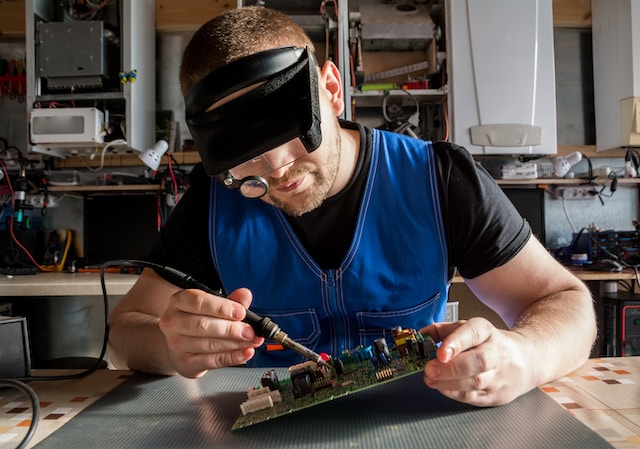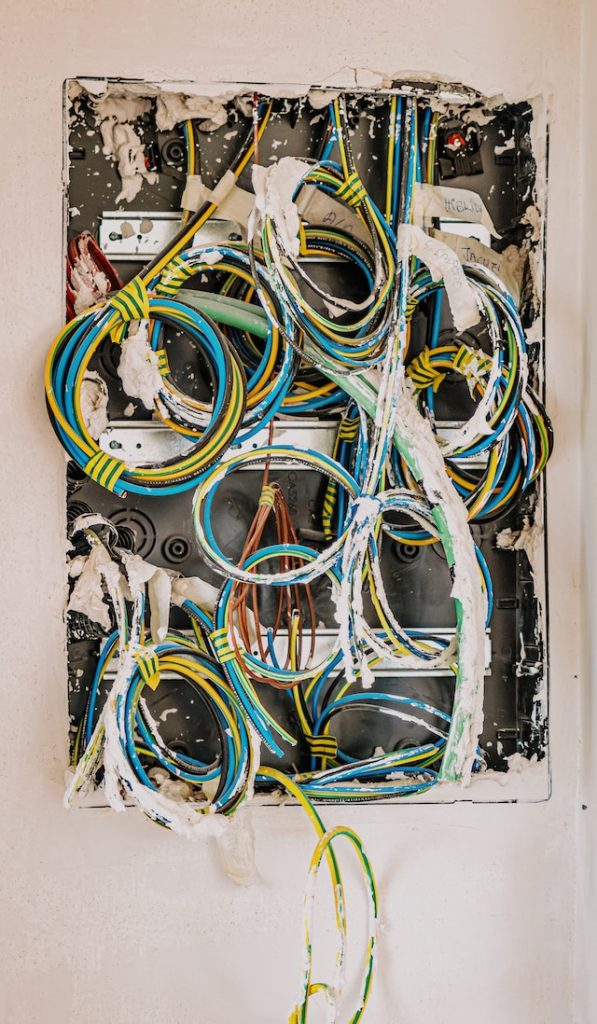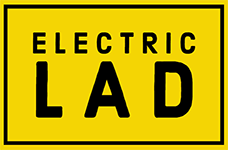
Electricity flows through our world, powering everything from our smartphones to our homes to our entire cities. At the heart of this electrical infrastructure are circuits – intricate networks of wires, components, and power sources that work together to transmit and transform electric energy.
Basic Concepts of Electrical Circuits
At its most basic level, an electrical circuit is a closed loop of wires with a power source and some sort of load or device that uses the energy. When the circuit is closed, electrons flow from the power source through the wires to the load, where they do some sort of work, such as lighting a light bulb, spinning a motor, or charging a battery.
Voltage, Current, and Resistance
In order to understand electrical circuits, it’s important to grasp the basic concepts of voltage, current, and resistance. Voltage, also known as electric potential difference, is the measure of the electrical potential energy per unit charge. In other words, it’s the force that drives electrons through a circuit.
Current, on the other hand, refers to the flow of electrons through a conductor. It’s measured in units of amperes (amps) and is determined by the voltage and the resistance in the circuit.
Resistance is the measure of how much a material opposes the flow of electrons. It’s measured in units of ohms and is influenced by factors such as the material’s conductivity, temperature, and length.
Ohm’s Law and its Application
Ohm’s Law is the fundamental principle of electrical circuits and is a critical concept to understand. It states that the current through a circuit is directly proportional to the voltage and inversely proportional to the resistance. In mathematical terms, Ohm’s Law can be represented as I = V/R, where I is the current, V is the voltage, and R is the resistance.

Understanding Ohm’s Law allows engineers and technicians to design circuits that will perform as intended. By manipulating the voltage, current, and resistance in a circuit, it’s possible to achieve a desired result, such as powering a motor or lighting a room.
Power and Energy in Electrical Circuits
Power is the rate at which energy is transferred or converted in a circuit. It’s measured in units of watts (W) and can be calculated by multiplying the voltage by the current, or P = VI.
Energy, on the other hand, is the capacity to do work and is measured in units of joules (J). In an electrical circuit, energy is the product of power and time, or E = Pt.
Understanding power and energy in electrical circuits is essential for designing and maintaining efficient systems. By minimizing energy losses and maximizing power output, engineers and technicians can ensure that circuits operate safely and cost-effectively.
Circuit Design and Prototyping
Designing a circuit requires thoughtful consideration of various factors, such as the type of device it will power, the available power source, and the intended performance specifications. Before beginning the design process, it’s important to define the requirements and constraints of the circuit, as well as any specific design preferences or limitations.
Breadboarding and prototyping techniques
One common approach to circuit design is to use a breadboard to prototype the circuit. A breadboard is a type of solderless prototyping board that allows components to be easily added, removed, and reconfigured. Breadboarding is a useful technique for quickly testing out different circuit configurations without committing to a permanent layout.
Component selection and circuit layout
When selecting components for a circuit, it’s important to choose those that are compatible with the power supply and other components in the circuit. This involves considering factors such as voltage ratings, current ratings, and resistance values. Component datasheets, which contain detailed information about a component’s specifications and performance characteristics, are an essential resource for component selection.
Once the components have been chosen, the circuit layout can be designed. This involves determining the physical placement of components on the board and connecting them using wires or traces. The layout should be optimized for size, efficiency, and ease of assembly.
Testing and troubleshooting
Testing and troubleshooting are critical steps in the circuit design process. Before connecting the circuit to a power source, it’s important to check for any faults or errors in the design. This can include verifying that the correct components have been used and that their connections are correctly polarized. Once the circuit has been powered on, it should be carefully monitored for proper operation. If any issues arise, it may be necessary to perform further testing and troubleshooting to identify and resolve the problem.
Safety Considerations in Electrical Circuits
When working with electrical circuits, it’s important to prioritize safety at all times. The high levels of voltage and current present in circuits can quickly lead to serious injury or death if proper precautions are not taken. Here are some key safety considerations to keep in mind when working with electrical circuits:
Electrical safety guidelines: It’s essential to be familiar with the basic guidelines for working with electricity, such as the importance of wearing appropriate personal protective equipment (PPE), such as rubber gloves and safety goggles, and keeping the work area clear of any potential hazards.
Grounding and earthing: Grounding and earthing are essential safety measures that help to prevent electrocution. Grounding involves connecting electrical equipment to the ground or a common point of zero potential.

Earthing, on the other hand, involves connecting conductive parts of electrical equipment to the earth. These measures help to prevent the buildup of dangerous electrostatic charges and provide a safe discharge path for current.
Safe handling of electrical components: When handling electrical components, it’s important to take care to avoid damaging them or coming into contact with live electrical parts. Always ensure that components are properly insulated and disconnected before handling them, and avoid touching any live electrical parts.
Protection against electric shock: Electric shock is a serious risk when working with electrical circuits. Proper insulation and grounding of equipment, the use of circuit breakers and fuses, and the installation of ground fault circuit interrupters (GFCIs) are all important measures for preventing electric shock. It’s essential to follow proper procedures for testing and troubleshooting circuits, and to never work on live circuits without appropriate training and equipment.
Applications of Electrical Circuits
Power distribution and wiring
Electrical circuits are the backbone of power distribution systems that provide electricity to homes, commercial buildings, and industrial facilities. These circuits include power transmission lines, transformers, switchgear, and various protection systems. In residential and commercial settings, circuits are used to distribute power to appliances, lighting systems, and other electrical devices. Properly designed and maintained electrical circuits are critical for ensuring the safety and reliability of the power grid.
Electronics and digital systems
Electronics and digital systems rely on complex electrical circuits to function. These circuits are used to control and regulate the flow of electricity, process signals, and store and retrieve data. Common examples of electronic circuits include microprocessors, digital signal processors, and analog-to-digital converters. Innovations in circuit design have played a major role in advancing the fields of computing, telecommunications, and consumer electronics.
Communication systems
Electrical circuits are essential for transmitting and receiving signals in communication systems. From radio antennas to fiber optic networks, these circuits enable communication devices to send and receive information over long distances. In wireless communication systems, circuits are used to amplify signals, demodulate information, and filter out noise. Modern communication systems rely on highly optimized circuits to achieve optimal performance and efficiency.
Renewable energy systems
Electrical circuits are crucial for harvesting and storing renewable energy from sources such as solar panels, wind turbines, and hydroelectric generators. These circuits convert the raw energy from these sources into usable electricity and store it in batteries or other energy storage devices.

In addition to reducing reliance on fossil fuels, renewable energy systems have the potential to provide reliable and sustainable power to underserved communities around the world.
In short, electrical circuits are the foundation of modern technology and a crucial component of our daily lives. From powering our homes and businesses to enabling advanced electronics and communication systems, circuits play a vital role in modern technology. Whether you’re an engineer, scientist, or just a curious individual, studying circuits can open up a world of possibilities and help you better understand the fundamental forces that power our world.
